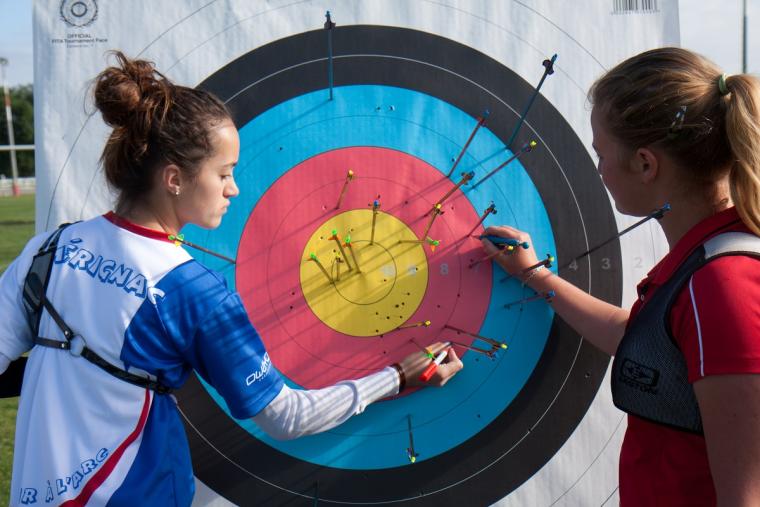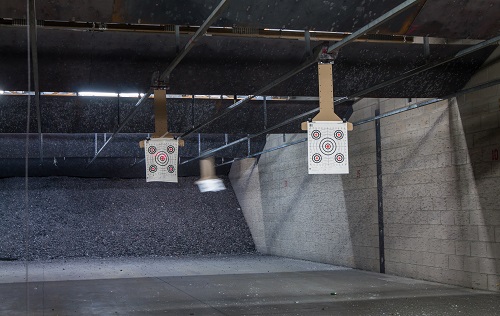
On Oct. 6, President Joe Biden signed bipartisan legislation that protects the use of federal funds for hunter safety and shooting sports classes. The new law — dubbed the “Protecting Hunting Heritage and Education Act” — requires the Department of Education to restore school districts’ ability to use federal resources for school archery, gun safety and hunter education programs.
According to USA Today:
The bill became law after months of questions in rural America about Education Department guidance about how districts nationwide should interpret a provision in the Bipartisan Safer Communities Act, a landmark piece of gun-safety legislation passed in the wake of the massacre at an elementary school in May 2022 in Uvalde, Texas.
Nineteen students and two teachers were killed in that shooting, rocking the nation and spurring one of the most significant and historic gun-control laws from Congress in decades. The legislation reformed the background-check system for gun purchasers and denied gun sales to convicted domestic abusers.
The bill was introduced by U.S. Senators Jon Tester (D-Montana), Bob Casey (D-Pa.), Lisa Murkowski (R-Alaska) and Susan Collins (R-Maine), and its passage comes as a relief to many — especially those in rural areas.
“Montanans sent me to the Senate to protect our rural way of life, and that’s exactly why I stood up to the Biden Administration’s decision to block the use of federal dollars for hunter safety classes,” Tester said in a statement. “As a third-generation Montanan, I had the opportunity to learn about the importance of responsible gun ownership and hunting from these longstanding hunter education courses — and it’s critical that our kids and grandkids are afforded that same opportunity.”
“It is critical that we address any barriers — no matter the scale — that prevent us from educating future generations of hunters and anglers and instilling responsible safety practices central to the enjoyment of our outdoor traditions,” added John Gale, vice president for policy and government relations for Backcountry Hunters & Anglers. “BHA urges Congress to advance this corrective language as swiftly as possible to limit any adverse impacts on American youth and the school programs that rely on federal funding to support a range of unique educational opportunities.”
Archery is one of those “unique educational opportunities.” The National Archery in Schools Program (NASP) aims to teach focus, self-control, patience and life lessons to students in grades four through 12, according to the organization’s website, which also notes that 1.3 million students in almost 9,000 schools participate in archery every year. That translates to more than 87,500 unique competitive archers during the 2022-2023 season — and 1,638 total NASP tournaments, which is a 20 percent increase over the previous year. As a result, NASP officials say 91 percent of students pursue (or want to pursue) other outdoor activities.
“We’re good for kids,” NASP President Tommy Floyd told USA Today. “I don’t want some little girl in Texas or a little boy in Kansas to do without it because of a political misunderstanding.”
 Archery also contributes to conservation efforts through the federal excise tax. As archery360.com — a news and resource site affiliated with the Archery Trade Association (ATA) — notes, a portion of the sport’s equipment sales “is allocated to fundamental projects that will protect and preserve our land for generations to come.”
Archery also contributes to conservation efforts through the federal excise tax. As archery360.com — a news and resource site affiliated with the Archery Trade Association (ATA) — notes, a portion of the sport’s equipment sales “is allocated to fundamental projects that will protect and preserve our land for generations to come.”
The site offers a brief history:
Enacted in 1937, the Pittman-Robertson Act, or Wildlife Restoration Act, originally required manufacturers to pay a tax on firearms and ammunition. In 1972, bows, arrows and archery equipment were added to the act. The 11% tax on these items is known as the federal excise tax. The funds from the FET go directly toward conservation and the outdoor industry. “The federal excise tax on bows, arrows and all accessories that attach to the bow provides valuable funding used for game and land management that benefits all wildlife,” Jennifer Mazur, ATA’s senior director of outreach and education, said. “Any archer setting up for that shot, whether at an animal or a static target, is a conservation warrior.”
The U.S. Fish and Wildlife Service distributes the funds to various organizations according to specific needs. “This funding can be the essential factor for the continuation and completion of various conservation projects,” Nicole Nash, ATA’s senior manager of outreach, said. “Projects might include public archery ranges, wildlife habitat restoration, hunter education, public land access, wildlife research and more.”
Nash described archers, hunters and anglers as the financial keystone for state agencies. “It goes without saying that without proper funding, conservation efforts wouldn’t survive,” Nash said. “Outdoor recreation opportunities wouldn’t exist. Wildlife populations would go unchecked. This is our — states, conservation groups and outdoor industries — purpose and why we exist: to educate people about the magnitude of license and equipment sales on the future of conservation.”
Archery360.com adds that, as of August, the FET had collected more than $45 million.
Destinations such as Foley, Ala., are reaping the increasing popularity of — and the benefits associated with — archery, too. The same day Biden signed the Protecting Hunting Heritage and Education Act into law, Foley was hosting the USA Archery National 3D Collegiate Championships. The weekend-long event, hosted in conjunction with the Archery Shooters Association, attracted teams from as far west as California and as far north as New York, according to Mike Tyrell, ASA’s event director. (ASA also hosts six Pro/Am competitions around the country every year.)
“This event focuses on individual as well as team competition, whereas our Pro/Am events are strictly individual,” Tyrell said about the championships in Foley, which included several archers who medaled earlier this year in international competition.
“Traveling a distance to shoot on a national stage is an experience that will stay with [these shooters] forever,” added David Thompson, executive director of Leisure Services for the City of Foley.

